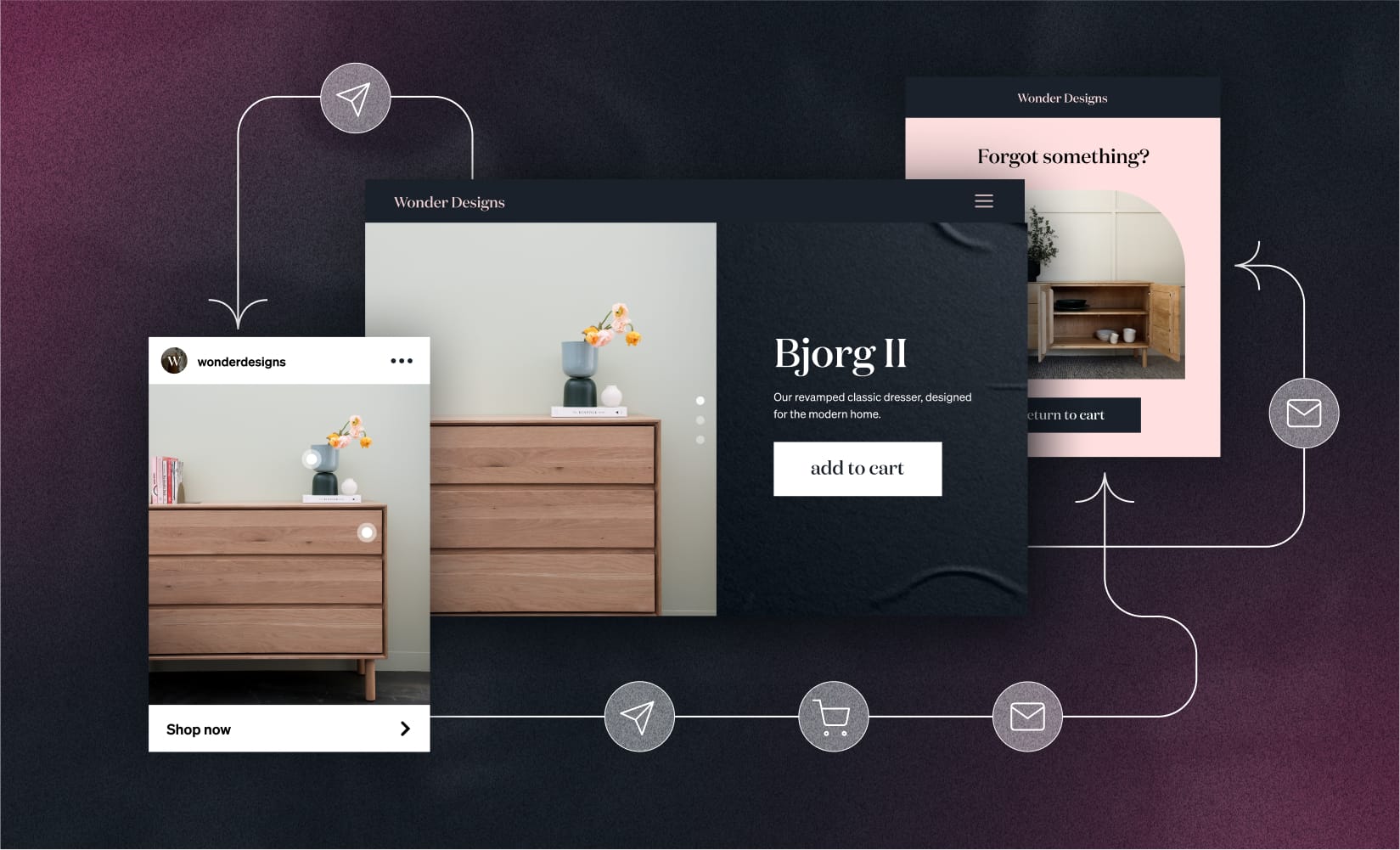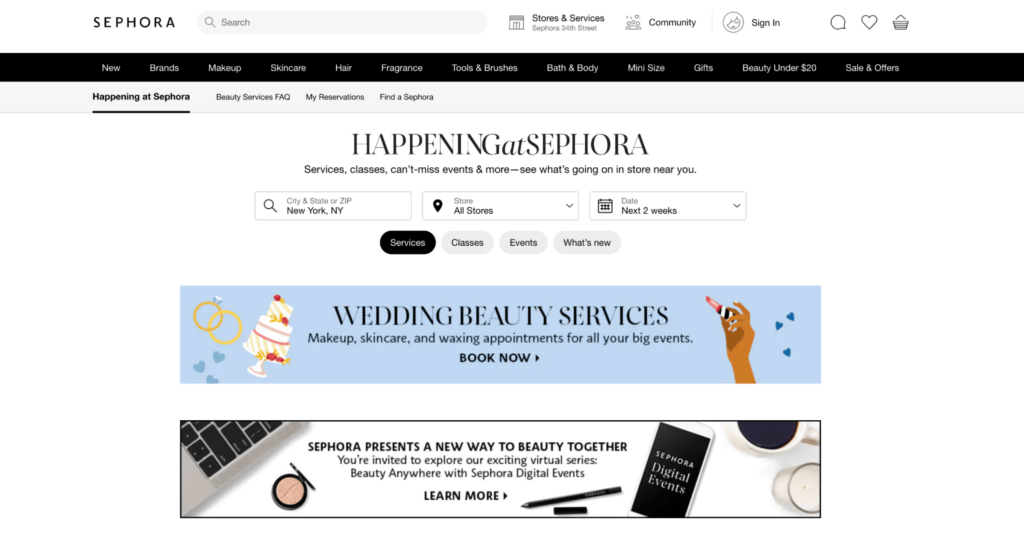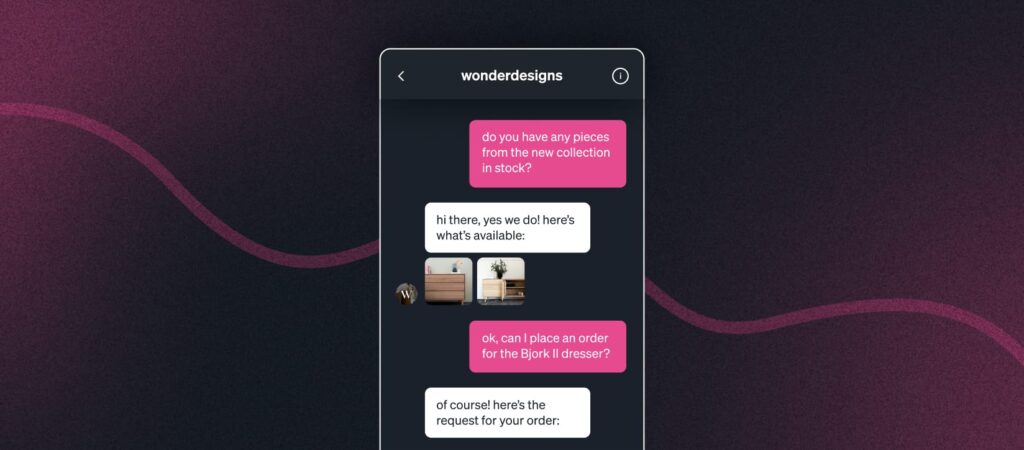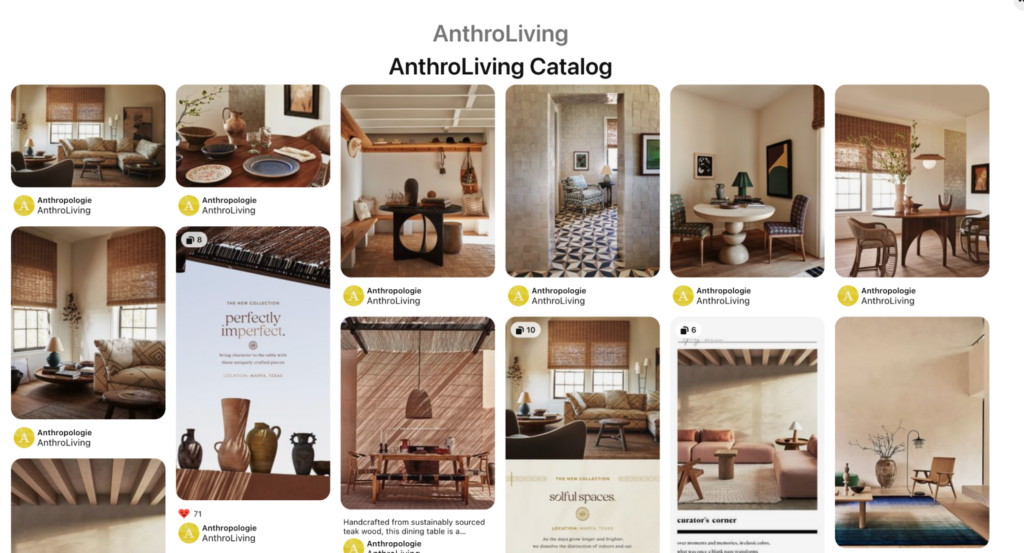Omnichannel Retail Strategy: Best Practices For Scaling Past Pure Play

The growth of omnichannel retail has been phenomenal and continues to expand.
In just one example, 55% of consumers now say they watch videos online—while shopping in-store—to help them make a buying decision.
It’s an exciting prospect for online retailers, but if you’re a pure play brand whose only retail outlet is your ecommerce store, it can be a daunting one too.
With so many channels, touchpoints, and marketplaces to choose from, the path from a single online storefront to omnichannel retail is not always clear.
But with a well-thought-out omnichannel retail strategy and a singular focus on specific goals, you can realize the potential benefits of selling across several platforms to an expanded customer base.
Here’s what we’ll cover in this guide today:
- What omnichannel retail is
- Pure play vs multichannel vs omnichannel retail
- Key elements to omnichannel retailing
- Benefits of an omnichannel retail strategy
- How to build an omnichannel retail strategy
- Omnichannel retail FAQs
#cta-visual-pb#<cta-title>Scale content creation across multiple storefronts<cta-title>Designed for larger brands, Shogun Page Builder Advanced enables your team to copy and clone content across your sub-brands and various storefronts with ease.Learn more
What is omnichannel retail?
First of all: what is omnichannel commerce?
Omnichannel is all about the overlap between touchpoints, identifying where they meet on the customer journey, and satisfying the customer there.
Omnichannel retail is all about making it possible to buy on any channel.
Customers don’t automatically make purchases as soon as they see a product. It’s not linear. They like to shop around, visit one of your physical stores to check it out, and explore features on different platforms.
So a successful omnichannel retail strategy is about identifying what kind of retail journeys your customers are on and presenting opportunities to explore and buy your products at a point or points that are convenient to them.
It’s also about providing help and support at multiple points along the customer journey, reducing friction, and boosting confidence to maximize ROI.
When you’re still at the pure play stage—selling only on your online store—then moving to omnichannel (selling on several channels at once, seamlessly) will take a little time.
You should consider where to place your efforts carefully, taking a strategic approach to expanding your points of sale.
Pure play vs omnichannel vs multichannel
Before we get into the details of building a robust omnichannel retail strategy for your rapidly-scaling brand, let’s look at some definitions.
Pure play (or single channel) retailing
Pure play (AKA single channel retailing) is where you only sell through one channel, like your online store.
It has the advantage of simplicity: Your customers know where to go if they want to buy one of your products, and you only have to manage one sales channel.
Multichannel retailing
This means selling through multiple channels (email, your online store, Wayfair, Amazon, and Instagram, for example).
A multichannel strategy means identifying the channel or channels where you do best and focusing your efforts there.
Omnichannel retailing
Again, this approach refers to selling on several channels at once, but in contrast to a multichannel strategy, with omnichannel, the focus is on creating a seamless experience between channels.
So, if properly executed, your customers don’t notice the transition between touchpoints, and a consistent customer journey is created wherever you interact with your customers.
#cta-paragraph-pb#These last two terms are sometimes used interchangeably, which can cause some confusion. For a comprehensive look at the meaning of omnichannel and the differences between these three terms, hop over to our guide to multichannel strategy.
An example: Sephora’s omnichannel strategy
If you’re looking for some omnichannel inspiration, the beauty brand Sephora is an example of a brand crafting a fantastic all-around omnichannel retail strategy.
They bring technology into their stores and link it with their online channels to create a great omnichannel experience.
If you visit in-store, you can get help from an assistant with an iPad who can let you virtually ‘try on’ different beauty products.
They also use their app to deliver immersive experiences and give customers the chance to explore different styles through video, news feeds, and showcases of the latest trends.
Their customers can book beauty appointments through their phones, giving Sephora continuous retail opportunities throughout the customer journey.

#cta-paragraph-pb#For more examples of omnichannel brands in action, check out this post on best practices and the brands doing omnichannel marketing right.
What are the key elements of a successful omnichannel strategy?
A successful omnichannel retail strategy consists of a few vital pieces.
Implementation can be complex, but once you have a good system in place, your business can operate more efficiently while giving customers exactly what they want.
Omnichannel marketing
Marketing is where your brand really connects with your customers. That makes it one of the most important parts of the omnichannel strategy.
By first collecting information about who your customers are and how they interact with brands, you can begin to develop a clear omnichannel marketing strategy that only focuses on the right customer touchpoints.
Omnichannel fulfillment
Logistics are the hidden foundation of your omnichannel strategy.
While showing up with consistent messaging wherever your customers are is a must-have, it won’t matter if you can also deliver the actual product they want where they want it.
Omnichannel fulfillment is all about getting your awesome products to your happy customers’ hands in a timely manner, whether that’s via BOPIS (buy online, pick up in-store) or expertly delivered by a 3PL at Prime-like speed.
Omnichannel platform

To tie it all together, you need software that keeps customer data, manages purchase, personalizes experiences, and fulfills orders across your many channels seamlessly.
Platforms like Shopify, BigCommerce, and Adobe Commerce are all great foundations for omnichannel sales, which can be aided by platforms to help with marketing, fulfillment, customer service, frontend design, and more.
#cta-visual-pb#<cta-title>Scale content creation across multiple storefronts<cta-title>Designed for larger brands, Shogun Page Builder Advanced enables your team to copy and clone content across your sub-brands and various storefronts with ease.Learn more
Why is omnichannel retailing important for ecommerce brands?
There used to be a time when as a customer, you’d wait for weeks or months even to see your favorite band’s latest album or that newly released tech gadget.
Although those days are long gone, it wasn’t so long ago that you would have to wait until a new jacket you’d seen online was in stock at your local store before you could buy with confidence.
Now, with customers used to streaming music instantly and watching YouTube previews of the latest tech before placing a well-informed order on an online marketplace, buying habits have fundamentally changed.
Today, the emphasis is on convenience.
Customers expect to be able to research, test, and buy products at a time of their choosing.
It’s a shift that presents significant value opportunities for ecommerce companies as long as they develop a retail strategy that mirrors customers’ shopping habits, allowing them to shop at every stage of the journey.
In short—shopping has become omnichannel, so retailers need a strategy to match.
Developing an omnichannel retail strategy means:
Meeting customers where they are
Expanding the channels you sell on makes you more visible.
You increase the pool of people who will come into contact with your brand and increase the frequency of interactions with new and existing customers.
This is terrific for brand awareness on several channels, especially if you’re able to keep touchpoints visually consistent.
Increased customer satisfaction
Providing that added support at the points where your customers need it most means they will come away from interactions with your brand feeling positive.
Even if you don’t close the sale at one particular interaction, you’ll increase the likelihood of a sale further down the line.
Say someone interacts with your sales associates via a live shopping channel. They get a positive, detailed response to their questions and continue to shop in-store.
The time your sales associate spent addressing those questions in real time created invaluable trust in your brand and a powerful sales opportunity.

Boosted sales
According to a comprehensive survey of 46,000 customers by Harvard Business Review, omnichannel shoppers “spent an average of 4% more on every shopping occasion in the store and 10% more online than single-channel customers.”
More frequent encounters with customers plus more satisfying shopping experiences across the board equals more sales and higher ROI.
It can be highly lucrative to appeal to shoppers eager to engage with you in this way!
#cta-paragraph-pb#Learn about the benefits of leveraging omnichannel analytics and data for more effective marketing campaigns.
How to build an omnichannel retail strategy
So how exactly do you go about creating a winning omnichannel strategy?
Here’s a step-by-step guide to getting you started on your journey from a pure play store to a comprehensive omnichannel operation.
1. Build relationships with your omnichannel customers
The first step on the road to omnichannel has to start with your customers.
If you want to sell to them across several channels and make their experience with your brand smooth and convenient, you need to know how they tick.
- What motivates someone to look at your products?
- What are their common pain points when shopping?
- What are their favorite channels to shop on?
- And what do they enjoy doing on those channels? (where do they navigate when there?)
With so many platforms, websites, and sources of information available to your shoppers, there are myriad ways your customers can come into contact with your products.
But their primary motivation to start searching will be relatively simple. “I want new shoes” or “I need a vacation” are examples of underlying wants and needs that give rise to a journey that will put them into contact with your brand.
Several tools and techniques available to online brands will let you map out this customer journey. You should do so in great detail to inform your marketing tactics and approach per channel.
2. Identify critical touchpoints in the omnichannel customer journey
Alongside mapping out the customer journey, you also need to locate where they interact with your brand.
If you’re looking for omnichannel marketing opportunities, this list will be a long one. It will include every ad, promotion, and branding public mention your brand gets.
But as we’re looking at a retail strategy, you should prioritize those touchpoints that you can sell to customers at. You should think creatively about how to do this, going beyond the obvious ones like your store or online marketplaces.
If your online brand strategy is built around pure play, it’s still likely that you will have a range of places where you interact with your customers.
How can you convert these into retail points?
- If you have a big following on Instagram and are using it to bring visitors to your store, is there a way you can leverage this? Can you sell directly to them on Instagram?
- Can you use your Facebook page to provide customer service and publicize special offers and events?
- Can you create an ecommerce mobile app, downloadable from your store, that offers after-sales support and also promotes new product lines to existing customers?
Google Analytics is a good place to start identifying potential touch points to optimize.
Under the ‘Acquisition’ section, you can generate several reports that will give you insights into where your traffic is coming from.
One of the most valuable reports is the ‘Source/Medium’ report, which you can find under ‘All Traffic’. This will give you a breakdown of the specific channels (the source) and the type of channel (the medium: social, weblink, etc) your visitors are coming from.
This will give you insight into where to spend some time reducing any friction in the buyer journey.
3. Invest in the right channels
Once you have your customers and the touchpoints they use mapped out, you can start identifying where the best retail opportunities lie.
- Which channels are most of your customers hanging out on?
- What content do they respond best to on each one?
- What kind of questions do your customers ask you on social media?
- How might you turn these interactions into selling opportunities?
Answering these questions will give you a good idea of your initial avenues for omnichannel retail.
Doing careful analysis of your strengths and weaknesses on various channels will allow you to be strategic about developing your omnichannel retail.
If you have a significant following on Instagram but little audience presence on Twitter, there’s little point investing resources in developing a marketing and sales plan for the platform.
Focus your efforts where you’re strongest, to begin with.
Alison Riveira from PeakActivity, a digital acceleration and technology services company, advises brands to identify the channels that have overlapping customer profiles:
“If a merchant is already having success from an advertising perspective in some other selling and marketplace areas, I think it’s a great idea to start there to explore new lines of revenue.”
At the same time, you should pay close attention to where your competitors are getting their traffic.
SEMrush has a great tool called Traffic Analysis, which lets you see the source of a domain’s traffic.
If you notice your competitors have a strong presence on a channel where your engagement is lacking, it could be a sign that there’s potential to grow there, and you should incorporate it into a later phase of your omnichannel plan.
Anthropologie, the home, clothing, and accessory brand focused in on social media and made its Pinterest account a retail opportunity.
They added a home catalog to the platform that allows users to not only pin items to a board but to buy them on Pinterest too.
It’s an excellent example of a brand combining marketing avenues with the customer journey to drive sales.
When someone goes onto Pinterest to get some home decor inspiration, they may not be ready to purchase there and then.
But they can add an item that inspires them to their board, where it’s saved for later. This could either be the basis for a purchase elsewhere online or in one of their stores or could be bought directly from the platform.

4. Leverage data to improve personalization
The ability to create personalized experiences across channels is one of the most valuable assets an online brand can have.
If you’ve done the hard work of identifying data points and gathering analysis from them, you’ll have a robust data set from which to serve these experiences.
Delivering relevant, consistent content and product recommendations across the customer journey will make your customers feel valued and increase the chances of conversion.
Alison from PeakActivity identifies three factors to success in achieving good results in expanding into omnichannel:
1. Your data: It is imperative your product data structure meets the expectation of the channel and is optimized for conversion through that audience.
2. Your content: Your content should adjust based on area of the funnel, channel, and target audience. Don’t have one piece of content that spreads across every different area. TikTok is much different than Instagram, for example.
3. Your testing and ability to adjust: Always measure what you are running and pay close attention. Take small steps, measure, and then make adjustments.
5. Explore the power of social commerce
Social selling is the newest avenue for omnichannel retail. It’s an emerging channel but one that online brands need to pay close attention to.
Peter Ross from Cygnet.io, a developer of next-generation web technology, has observed the trend towards social selling moving in from platforms like Wechat in China:
“The West isn’t quite as dependent on it; however, we have seen an update. Especially since the iOS15 updates, we are seeing brands needing to cast a much wider net in order to capture the same audience metrics they have taken for granted in the past.”
Alison agrees that this is a huge coming opportunity for retailers:
“I was just at a conference where it was cited that the average TikTok user spends 80 minutes per session on TikTok.
That is a large amount of very focused and engaged time on a platform. Social channels have brought the idea of product reviews to a tangible, living moment.
Having ‘everyday people’ that your customers relate to—and even mentally invest in because they follow them—talk about a product makes them much more likely to convert. Make sure content is authentic for these channels.”
6. Integrate online and offline store experiences
If you’re at the point of scaling your brand from pure play to omnichannel, you might not be thinking about opening a physical store just yet. (Experimenting with a pop-up shop can be a great first foray into this!)
But omnichannel is not just about crafting smooth customer experiences online—it also means breaking down the wall between online and real-world retail.
If you already have a brick-and-mortar store, think about ways to make it more user-friendly for those customers who might see your products online before coming into your store to try them out or buy them (or vice-versa.)
Some common areas where you can integrate experiences are:
POS
Ensure your in-store point-of-sale system is connected to your online store (or your commerce platform), so you can track your customers’ buying habits across channels and make more intelligent recommendations and marketing decisions.
In-store kiosks
Set these up so your customers can pick up where they left off on their laptop or phone.
If your kiosk layout and menu system mirror your online store, it takes less time to find products and reduces friction.
BOPIS
This has become a standard expectation in recent years and illustrates the growth of omnichannel well.
Your customers expect to be able to order items online and have them ready for in-store pickup without any delays or complications.
A simple process for your customers hides complex warehousing, transportation, and stock level challenges for your business.
Thankfully, many commerce solutions now provide BOPIS technology to meet this expectation.
Kibo Commerce offers excellent enterprise-level BOPIS functionality in its commerce platform, but if you’re already set up on Shopify, you can configure your store to allow customers to buy online and pick up in-store.
WooCommerce is also configurable for local pickup.
7. Develop a top-notch omnichannel ecommerce tech stack
There are two broad categories of technology that can help you with your omnichannel retail strategy: the backend platforms that support selling on multiple channels and the frontend tech that can boost your omnichannel-focused game.
Omnichannel ecommerce platforms
Here are a few examples of ecommerce/backend platforms you may consider:
Shopify Plus
The leading ecommerce platform is headless-enabled, meaning you can connect multiple storefronts and channels.
It has comprehensive social media and marketplace integration, allowing you to sell on your choice of well over 100 channels while controlling your entire omnichannel operation from one place.
BigCommerce
As well as offering retailers access to over 150 marketplaces and social feeds, BigCommerce provides advanced inventory management tools that sync your inventory across channels, so you don’t have to worry about over or under-stocking.
Adobe Commerce (Magento)
The cloud-based platform provides access to multiple channels across several regions.
They focus on the agility of their API-led solution, which offers “limitless frontend flexibility” and enables retailers to design precisely the omnichannel retail experience they need.
Omnichannel retail FAQs
Which retailer has a strong omnichannel plan in place?
As we mentioned at the beginning of this post, Sephora is one of the best examples of a strong omnichannel retailing strategy in action.
Their customers can easily go from their online store to their physical store (or vice versa) without interruptions in their ordering process.
By using in-store technology, BOPIS, augmented reality, and more, they develop consistency for their shoppers.
What is an omnichannel platform?
An omnichannel platform is a solution that allows retailers to manage their marketing, orders, and fulfillment across multiple channels to provide a consistent experience for their customers.
Many ecommerce retailers will have more than one platform working together to create that seamless experience.
What are the pros and cons of omnichannel strategy?
Pros:
- Higher customer satisfaction
- Increased customer loyalty and retention
- Boosted sales and conversions
- Reduced friction in sales journey
- Better personalization
Cons:
- More complex implementation
- Higher cost to entry
- Requires increased cross-functional collaboration
Why is omnichannel better than multichannel?
Omnichannel is better than multichannel because the focus is the customer instead of the channel.
Omnichannel retailers don’t waste time on channels that their customers don’t use. Multichannel retailers are focused on the channels while forgetting the customer.
Build a retail strategy that centers the customer experience with omnichannel
If you’ve built a name for yourself and a loyal customer base by selling solely through your online store, you need to take your customers with you as you scale.
However you decide to develop your omnichannel strategy, it needs to be capable of providing the same level of customer experience that your store visitors are used to.
This is where all your hard work to identify touchpoints, get to know your customers and their needs, and smooth the transition between channels pays off.
Providing support, convenience, and above all, the ability to purchase at every stage of the customer journey will set you on your way to omnichannel retail success.
#cta-visual-pb#<cta-title>Create an incredible, high-performing ecommerce experience<cta-title>Designed for larger brands, Shogun Page Builder Advanced enables your team to copy and clone content across your sub-brands and various storefronts with ease.Learn more

Rhys Williams
Rhys is a writer specializing in enterprise software, ecommerce, and SaaS. He describes himself as a geek and a wordsmith and relishes making complex, technical topics come to life in easy-to-understand web copy.



